14. Song to Song
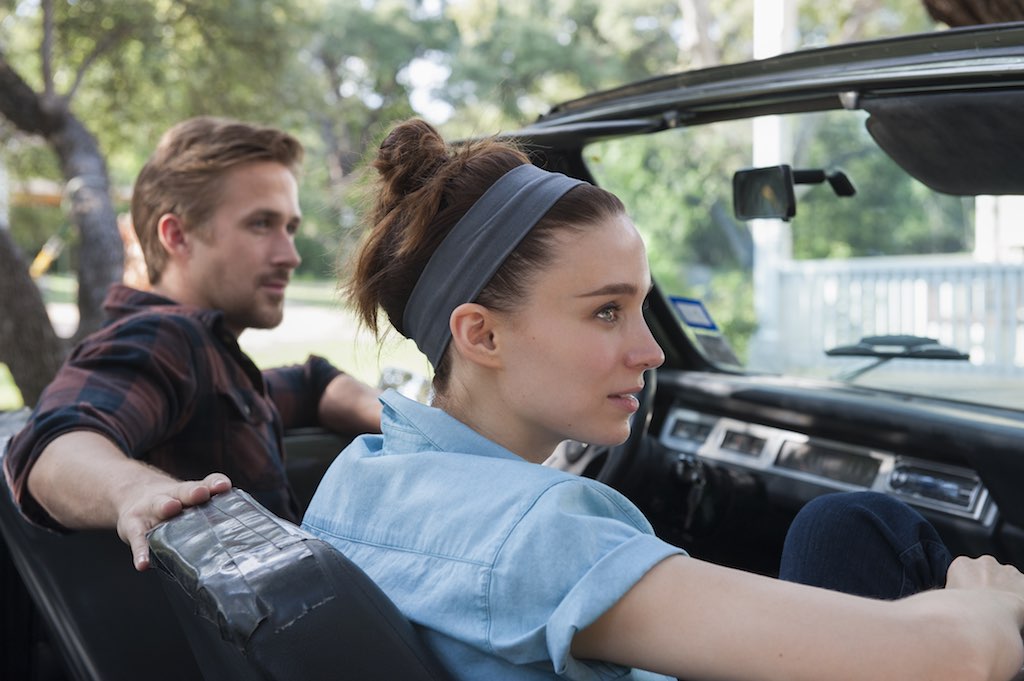
A visually luxuriant art film from writer-director Terrence Malick, Song to Song is a devastating and delicious love story about anguish, grief, loss, and just being alive. Set within the music scene in Austin, Texas, Malick presents two entwined couples; music magnate Cook (Michael Fassbender), and troubled waitress Rhonda (Natalie Portman); struggling but up-and-coming singer/songwriters BV (Ryan Gosling) and Faye (Rooney Mara). As their lives interlace amidst a panorama of music, temptations, and deceptions.
A moving miracle, and a deeply idiosyncratic one, of course Song to Song isn’t a movie for everyone (interjections: aren’t “movies for everyone” just comforting, non-confrontational vanilla anyways?), but it is a movie that exalts and haunts (Holly Hunter’s reaction to her daughter’s suicide sent me sobbing).
This is a film for Antonioni fans, for dreamers, for wanderers, for artists, and for lost causes, and it’s sublime and it will grandly outlive us all.
13. A Ghost Story
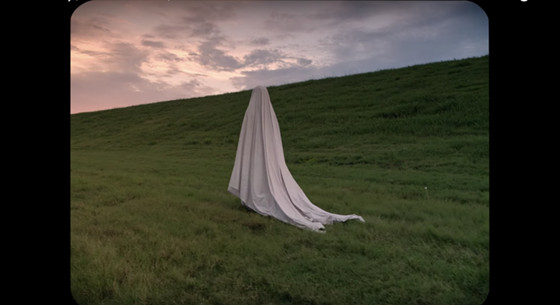
Toying with the traditional iconography associated with movies about restless spirits and the places they haunt, David Lowery’s materialistically mischievous, and altogether mesmerizing A Ghost Story does something very different as far as cinematic hauntings go.
Reuniting with his cast from Ain’t Them Bodies Saints (2013), A Ghost Story’s prologue introduces us to a married couple (including a brilliant Rooney Mara in a subdued and understated performance). We intentionally never learn too much about the two (not even their names) beyond only the broadest of strokes; he wants to stay in their newly acquired ranch-style bungalow and she wants to move out of it.
After becoming fleetingly familiar with the rhythms of their marriage and some snapshots of their biography, an offscreen car crash robs the man of his life and he’s soon a specter, draped only in a hospital sheet, haunting (though unable to interact much at all) his home and his wife. After a time, his grief-stricken bride finds the fortitude to leave the home they shared and go on, but he cannot.
An offbeat ghost story succinctly coupled with an unreadable one about love that, through obfuscation, is all about attachment, memory, and longing. A Ghost Story is an odd, artful examination of love, life, and death as glimpsed through crudely snipped eyes in ethereal linen.
12. Good Time
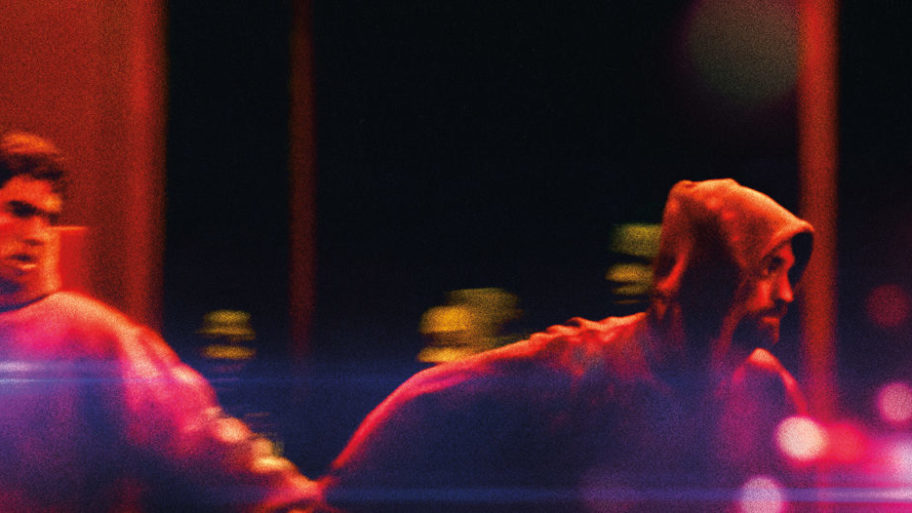
Connie Nikas (Robert Pattinson) and his developmentally disabled younger brother, Nick (Benny Safdie) are running-on-ice at breakneck speed, a frenzied pair of expeditious society’s free agents. Good Times is a lit fuse of confused white privilege in a subterrane underworld of everything-gone-from-bad-to-worse vivacity. A knotty New York-set crime story, this is the latest bravura showpiece in the sticky, sophisticated, socially impaired cinema of brothers Josh and Benny Safdie.
The maladjusted misadventures of Connie and Nick over one wild night, related at a relentless clip to the heady and propulsive Tangerine Dream-inspired electronic score by Oneohtrix Point Never, amounts to something akin to a convergence of Martin Scorsese’s After Hours (1985) and Mike Leigh’s Naked (1993), yet it remains it’s own altered beast.
A film that feels like it is in freefall, Ben Safdie (director, co-star), Josh Safdie (director, co-writer, co-editor), and cinematographer Sean Price Williams (his excellent romantic thriller Thirst Street is also on this list) jangle documentary-style realism together with instinctive genre film expressionism.
Good Time is an expansive (though still indebted to John Cassavetes) anomaly. Working once more with their preferred cinematographer Sean Price Williams, the film is ingeniously lit in black light, strobes, mercury vapors, fluorescent greens, and whatever available light allows. Largely shot in close-ups, handheld, and with genuine grit, the glossy realism is terribly hard to resist. There’s so much on-screen charisma and calamity that it’s at times perhaps all too much. Like an amphetamine-infused cocktail served in a postmodern Joycean Mason jar daring you to drink, Good Time will leave you delirious in the best possible way.
11. John Wick: Chapter 2
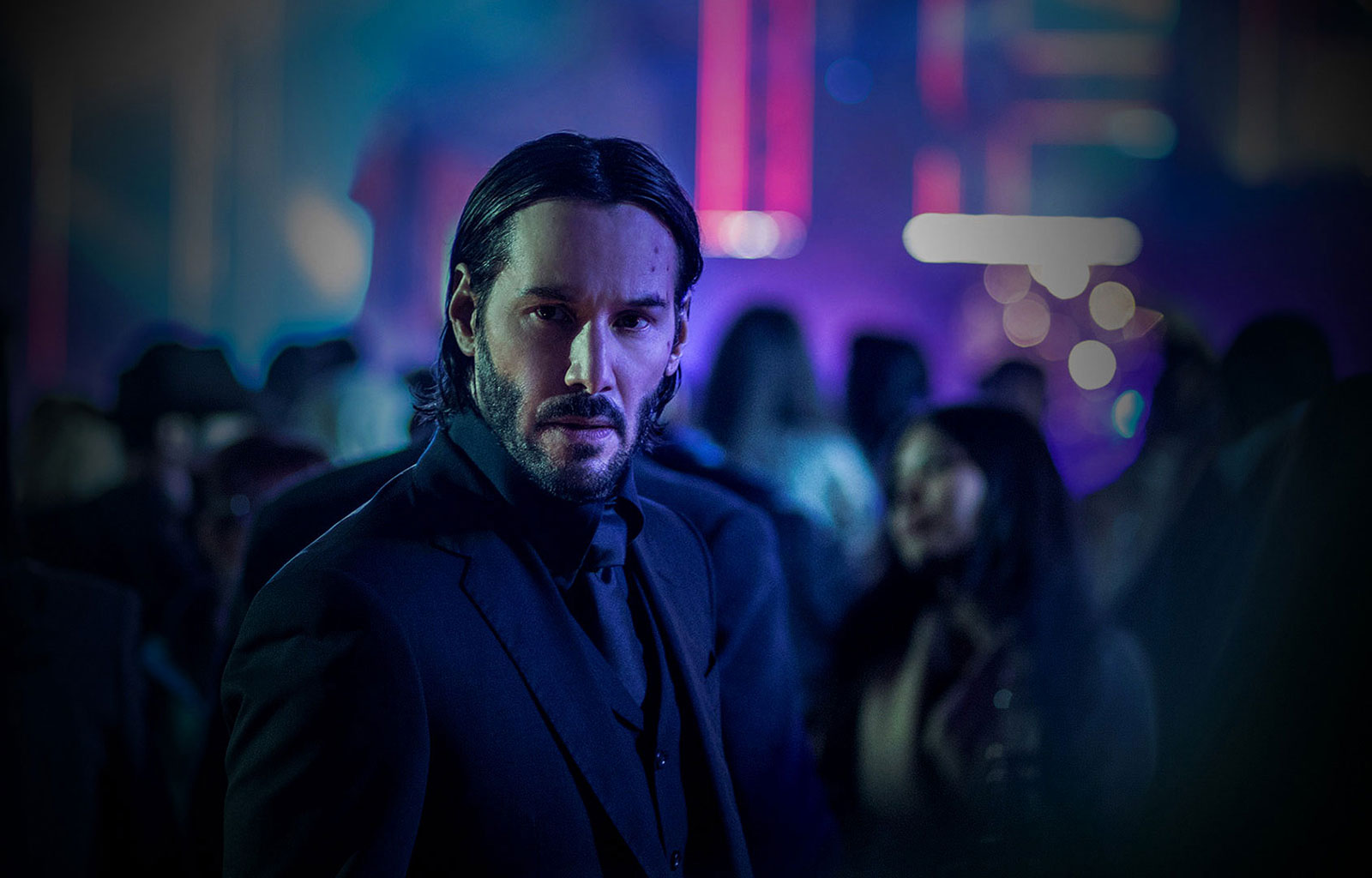
“The Godfather: Part II of action movies!” exclaimed a cinephile friend of mine after watching director Chad Stahelski’s second installment in the shockingly stylish neo-noir franchise concerning hitman John Wick (Keanu Reeves).
Like it’s 2014 predecessor, Chapter 2 of John Wick continues the homage to Jean-Pierre Melville (Le Cercle Rouge and Le Samouraï in particular), with shades of Dario Argento (Suspiria, Tenebre), John Boorman (Point Blank), and John Woo (The Killer), while also explicitly referencing giallo movies and spaghetti Westerns. Yeah, these movies aren’t for everyone, and the gun-fetishizing may be to much for some, but the inspired writing, clever action set pieces, brilliant fight choreography, colorful cinematography are hard to deny (and why would you?).
DP Dan Laustsen (who also expertly lensed The Shape of Water, further on down this list) does another brilliant job behind the camera, and his surreal use of color and spaces adds immeasurably to Stahelski’s pulp fiction fetish.
“The pleasures of John Wick: Chapter 2 may be even greater than those of its predecessor—itself a symphonic achievement in scrappy, balls-out, action filmmaking—because in this one, there’s no puppy murder to endure,” writes Time Magazine’s David Maccar, adding that the film “asks the classic pulp question—Are human beings worth saving?—and delivers, with the right proportions of joy and sorrow, the classic pulp answer: Sometimes, no.”
There’s so much to muse over when not fist-pumping, such as the detailed underworld cosmology of the John Wick universe, which memorably contains hitman hotels straight out of some surreal fantasy world. It’s a complex and cartoonish underworld of assassins and hitmen that is a lot of devilish fun to visit.
10. Baby Driver
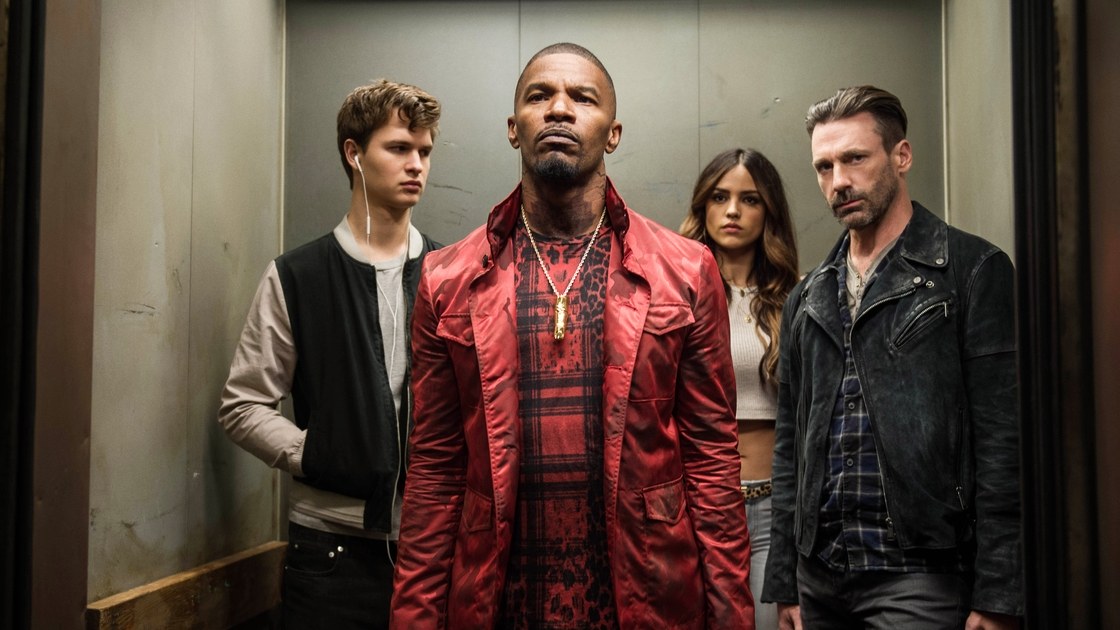
Edgar Wright’s (Shaun of the Dead [2004], Hot Fuzz [2007]) noir-tinged new movie Baby Driver is a playful pastiche of musical romance, comedy, and crime caper that exudes charm, creativity, and craft in what may well be his finest and most fun film to date (and if you’re familiar with Wright’s CV, that’s really saying something).
Projecting the charisma of a contemporary James Dean, Ansel Elgort is Baby, a rebel with a car who also happens to be one heck of a talented getaway driver. Baby has been blackmailed for years into working for a crime boss named Doc (Kevin Spacey, who’s admittedly hard to watch in light of his real-life predatory habits which surfaced after the film’s release, so at least it’s easier to loathe his character’s shady personage as a result), but he’s also found a reason to smile thanks to Deborah (Lily James), his dream girl.
Tout de suite Baby, who’s forever at his best behind the wheel owing to his personal playlist soundtrack via his ever present iPod, must face the proverbial music as an ill-omened heist jeopardizes his future with Debora, and maybe even his very life.
The game cast includes Jon Bernthal, Sky Ferreira, Jamie Foxx, Eiza González, and a campy Jon Hamm in unkillable slasher mode, the real star of Wright’s joyous, music-saturated, car chase odyssey may just be editors Paul Machliss and Jonathan Amos. The dynamite soundtrack––one of the year’s very best––which dictates so much of the movie’s many celebrated car chases just astound and overwhelm the viewer. Inventive and complex visuals, the spatial relationships between the vehicles, the forward strut of Baby behind the wheel, and the kinetic stimulus of it all makes Baby Driver a luxury to lay eyes on.
9. Wonderstruck
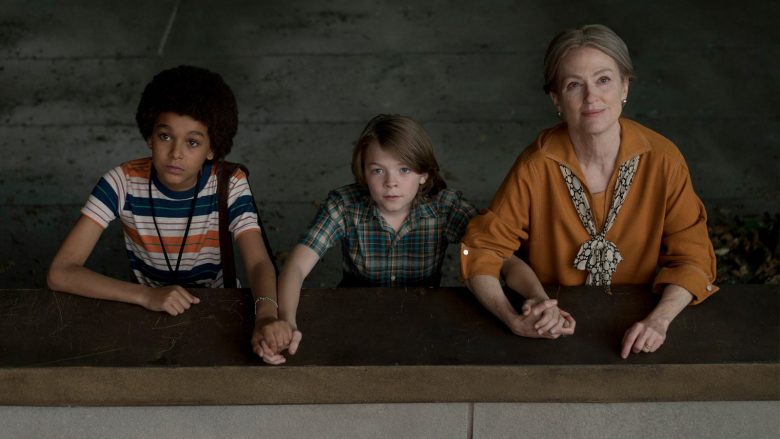
Mysterious and stirring, director Todd Haynes’ latest work, Wonderstruck is a film about childhood, memory, communication, family bonds, and finding your way, and while it may be a minor film from a major director, it’s still a small miracle. In many ways it’s Haynes’ Hugo.
“Alive with the magic of pictures and the mysteries of silence, [Wonderstruck] is an uncommonly grownup film about children,” raves The Hollywood Reporter’s David Rooney.
Based on Brian Selznick’s 2011 novel of the same name (Selznick also adapted the screenplay) and bouncing back and forth between two interlaced stories set in 1927 and 1977––each era with its own distinctive color palette and sheen courtesy of ace cinematographer Edward Lachman––the film tells of two children named Ben (Oakes Fegley) and Rose (Millicent Simmonds).
Ben, in ‘77, mourns his mother’s passing and pines for the father he never knew while Rose, in ‘27, fancies after an iconic actress of the silent screen named Lillian Mayhew (Julianne Moore), who’s visage and persona is cribbed from the great Lillian Gish as an homage.
Ben and Rose, though separated by 50 years, find themselves down similar paths on their individual roads to enlightenment, and while a few of the twists in their tales may be easy to anticipate, they’re told with insight, emotion, peculiarity, and grace
8. The Florida Project
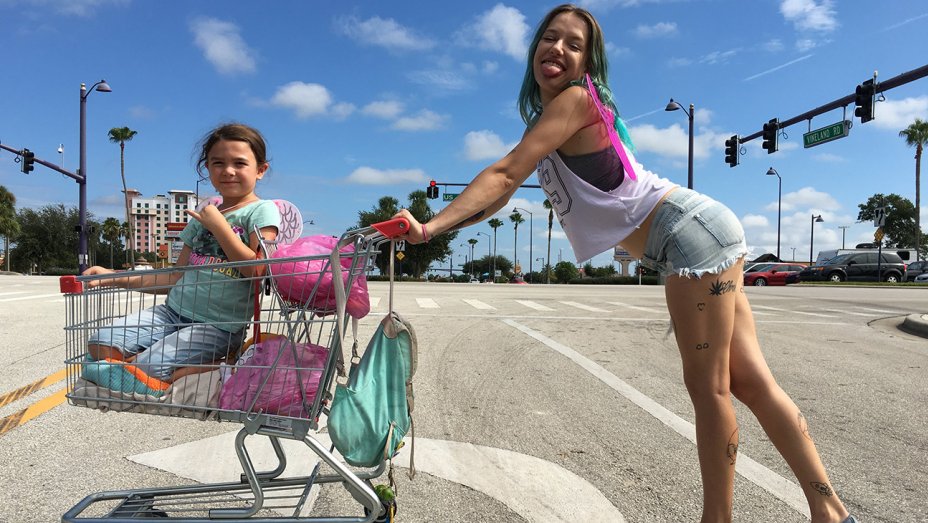
Sean Baker’s latest, The Florida Project, is a vivid tour-de-force film, which brings with it an illustrious new joie de vivre to the essentia of youth.
Set in a superannuated, and pastel colored corner of Orlando interstate, which Baker and cinematographer Alexis Zabe artfully reconstruct into a vibrant and gossamer-like playground that is guaranteed to warm the most jaded moviegoer’s heart.
Presenting a poignant portrait of childhood as lovingly glimpsed through the eyes of Moonee (Brooklynn Prince, stunning), a smart-alecky six-year-old being raised by her unruly young mother, Halley (Bria Vinai, also brilliant) during summer vacation. The mother-daughter duo live week to week at a seedy roadside hotel, “The Magic Castle,” which is managed by the compassionate but crusty patriarch, Bobby (Willem Dafoe).
Baker, in the tradition of François Truffaut’s oppressive childhood epic The 400 Blows (1959), presents an alternately endearing, upsetting, and occasionally romantically sentimental vision of tender age exploration and wonder on the serrated edge of adult misery and misunderstanding. Moonee, with her ragtag and bobtail buddies find humor and hoopla amidst abandoned homes, derelict fields, ice cream parlor parking lots, and laundromats, and while the grownup world of booze-fuelled fist fights, and fornication is never far off, it’s also a star-distance away from the play and pleasures of a spirited childhood’s point of view.
Dancing amidst squalor, The Florida Project is an utter joy, a celebration of aspiration and spectacle that will long be remembered as one of 2017’s finest and most stunning films. Here, in this heartfelt sphere of empathic understanding and picaresque perception we see a childhood, a motherhood, and an America that’s both exhilarative and deeply profound.